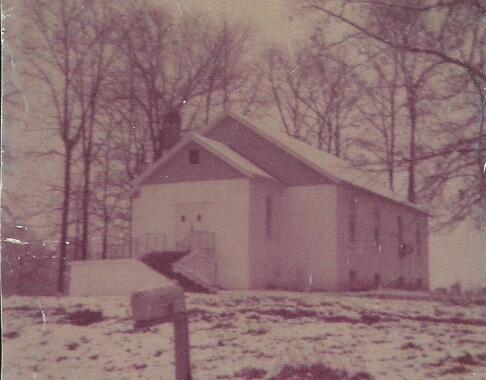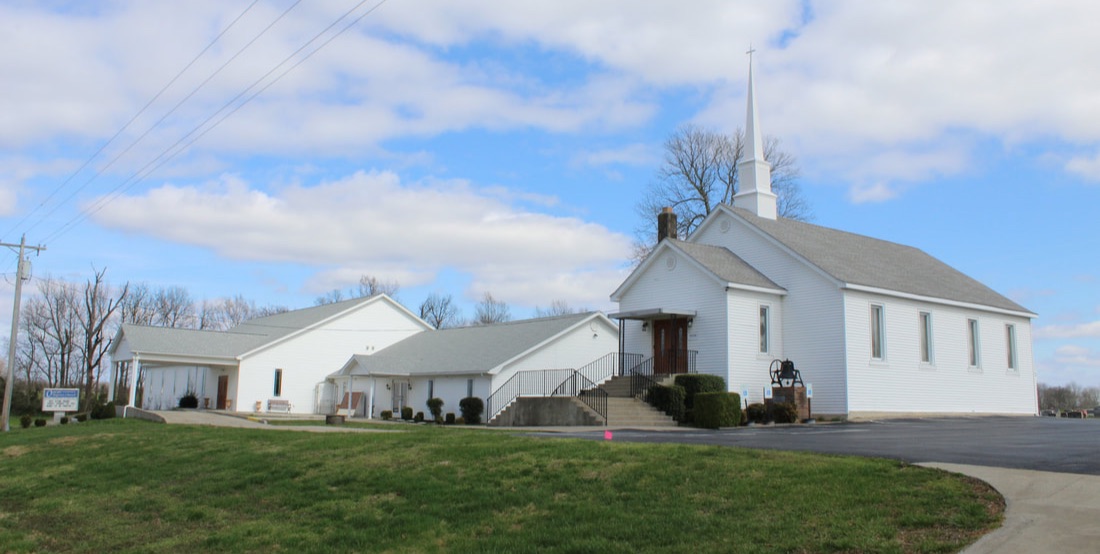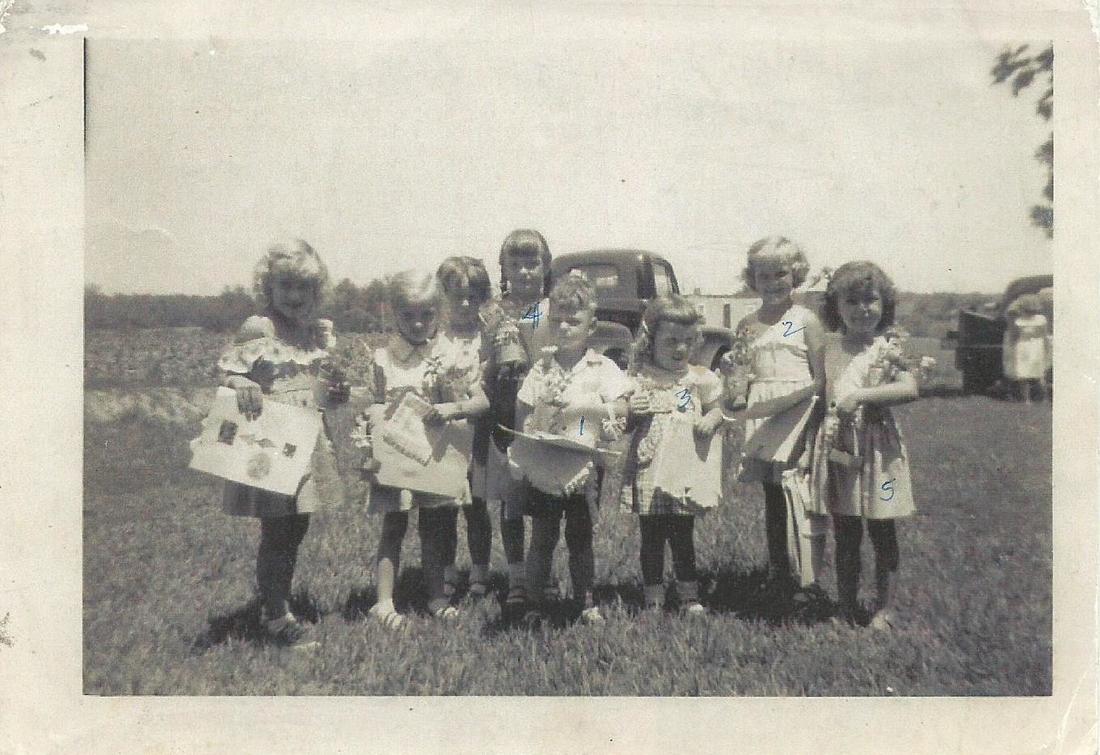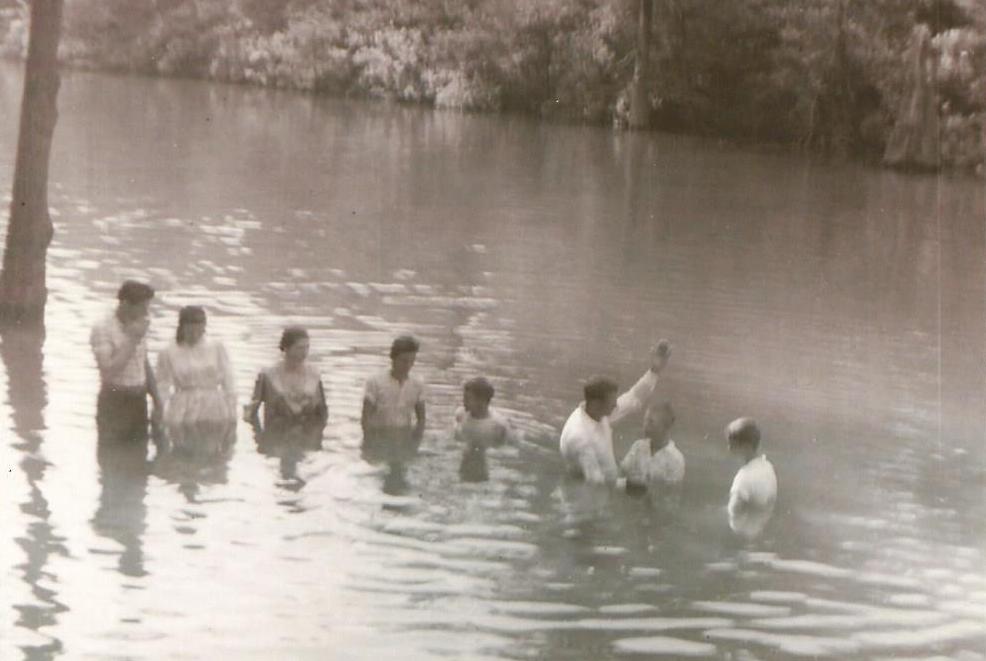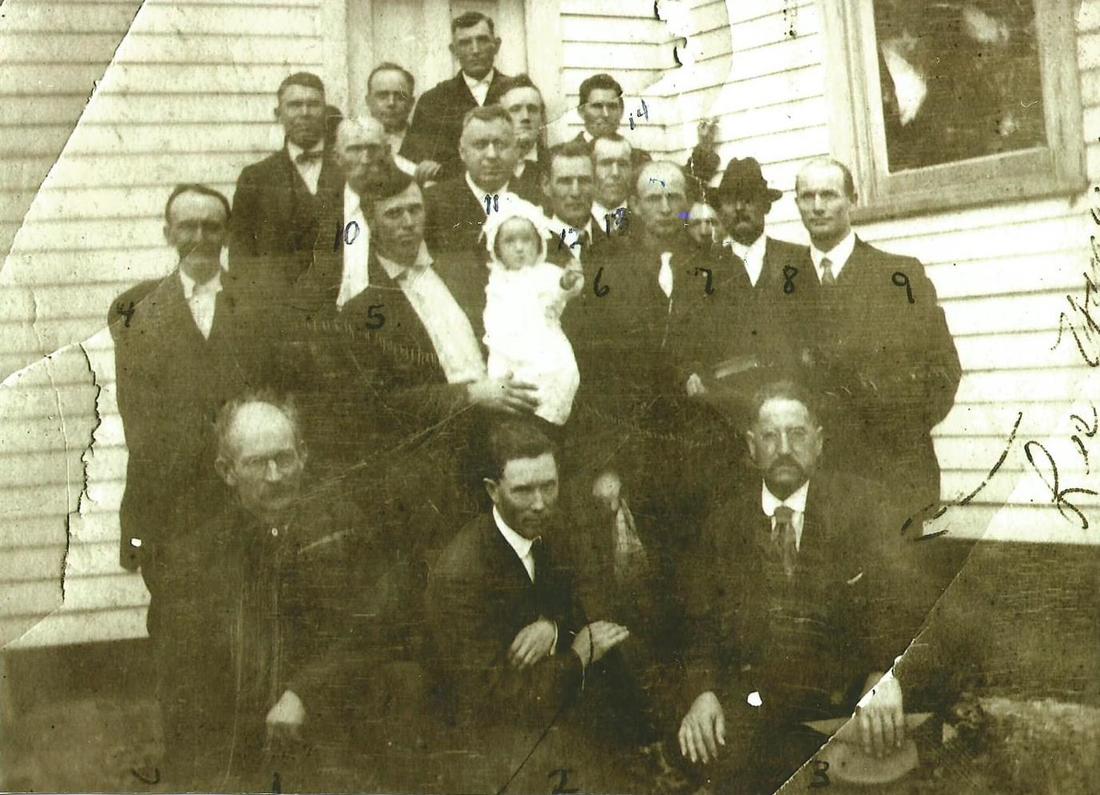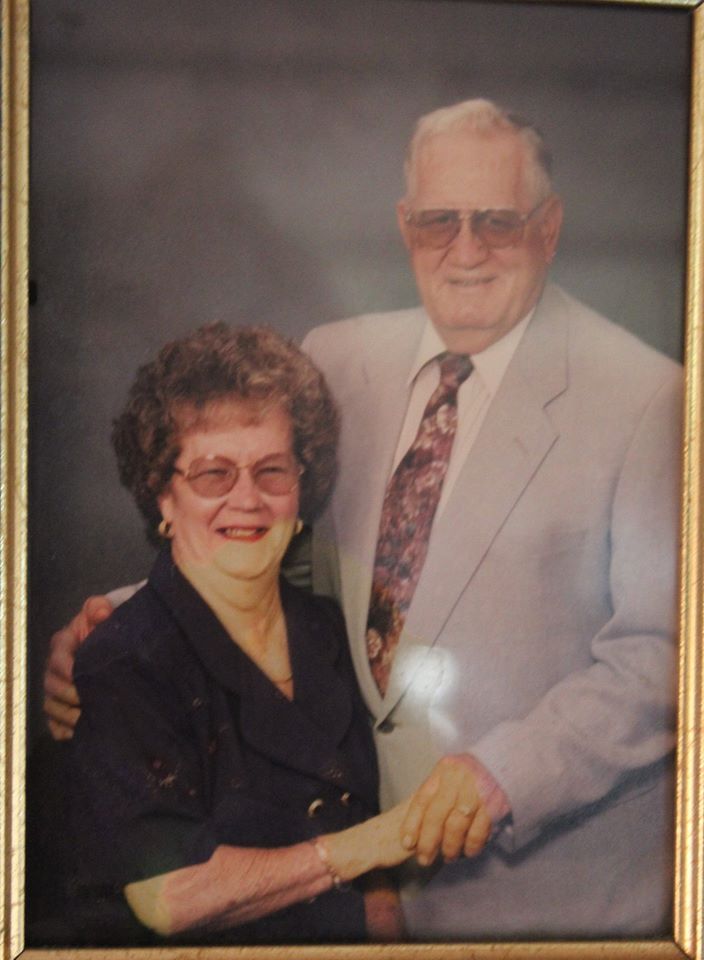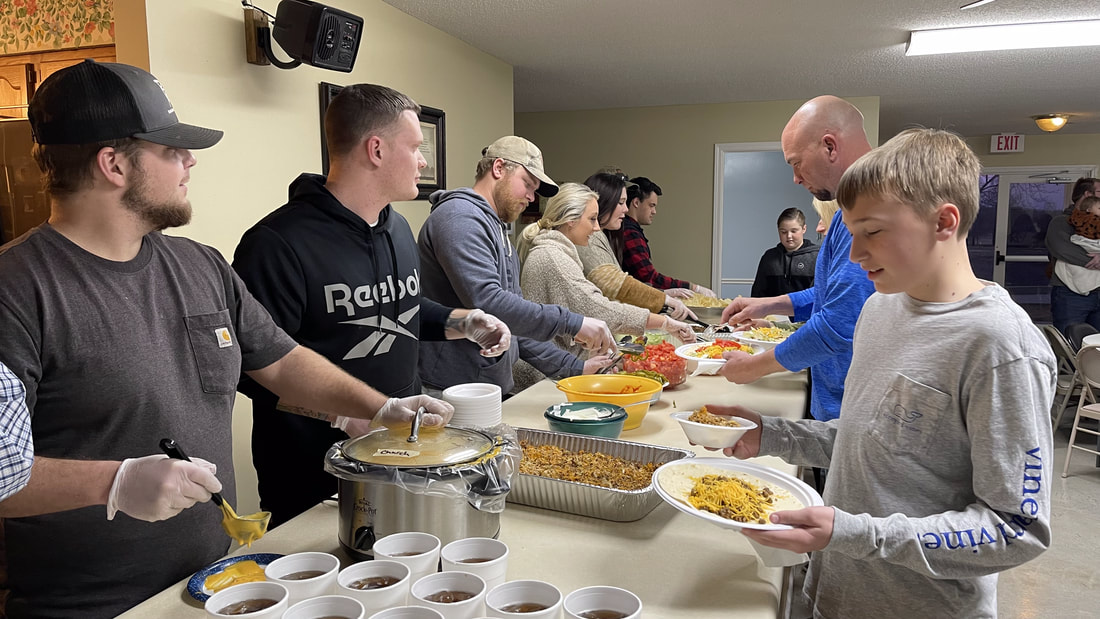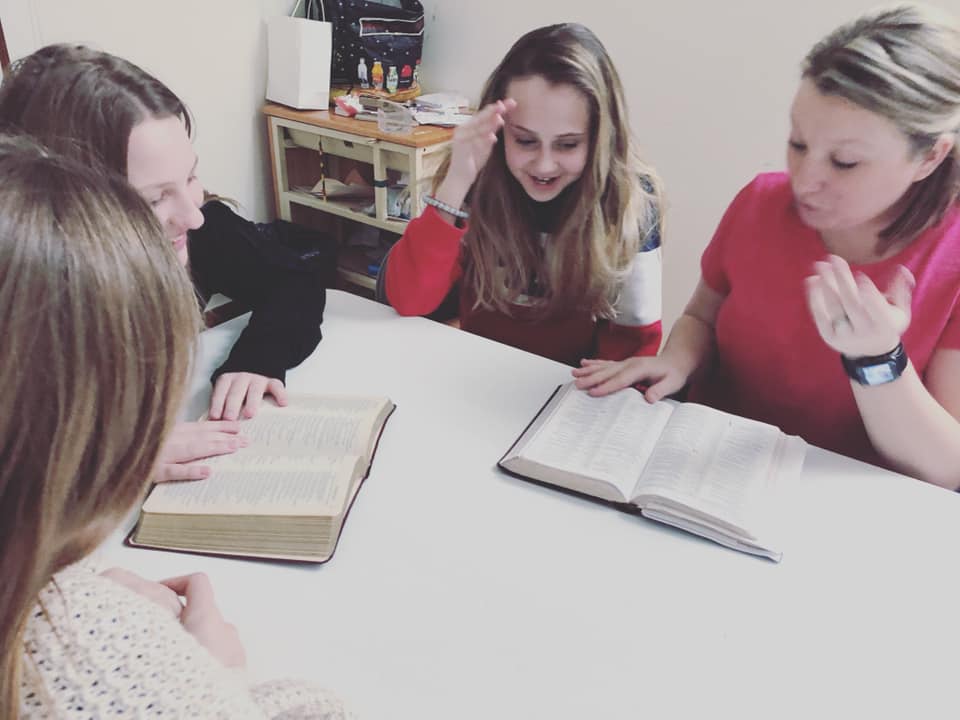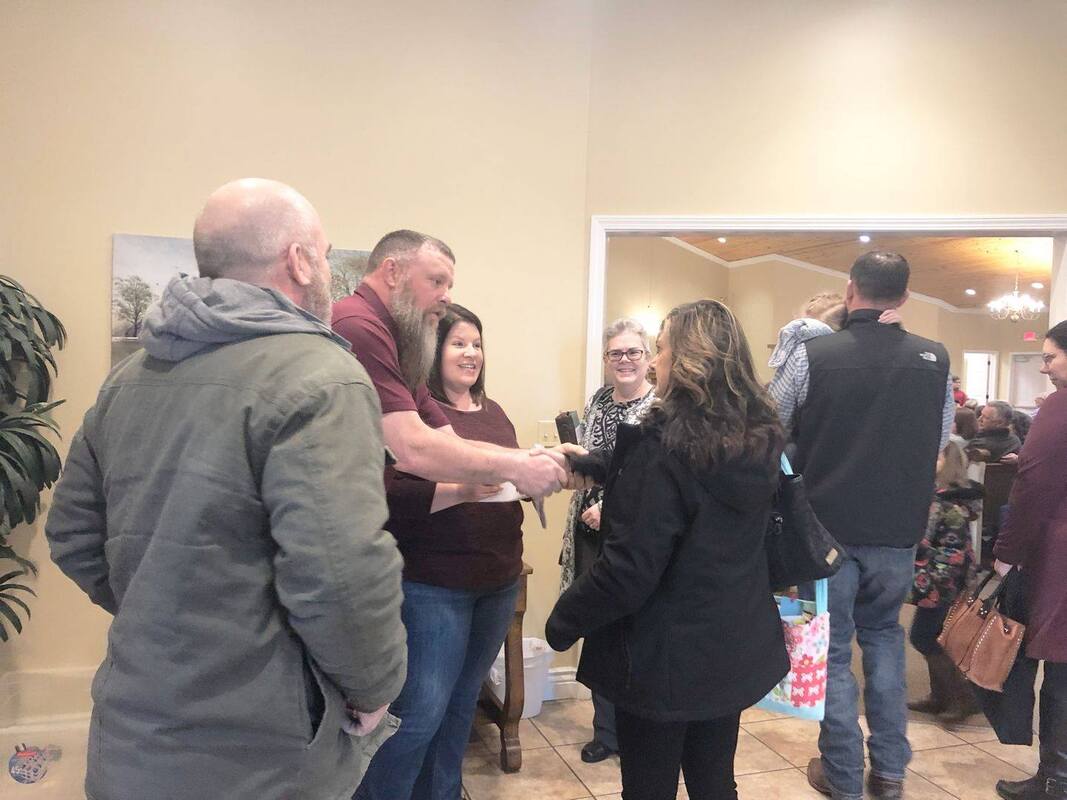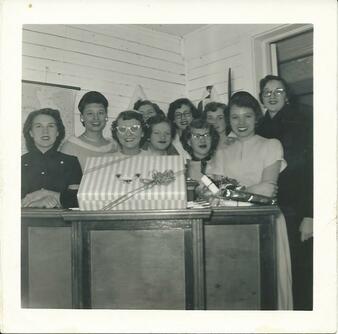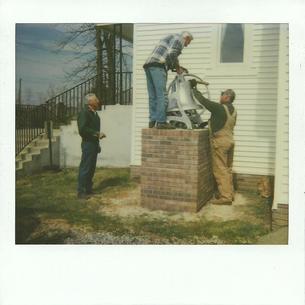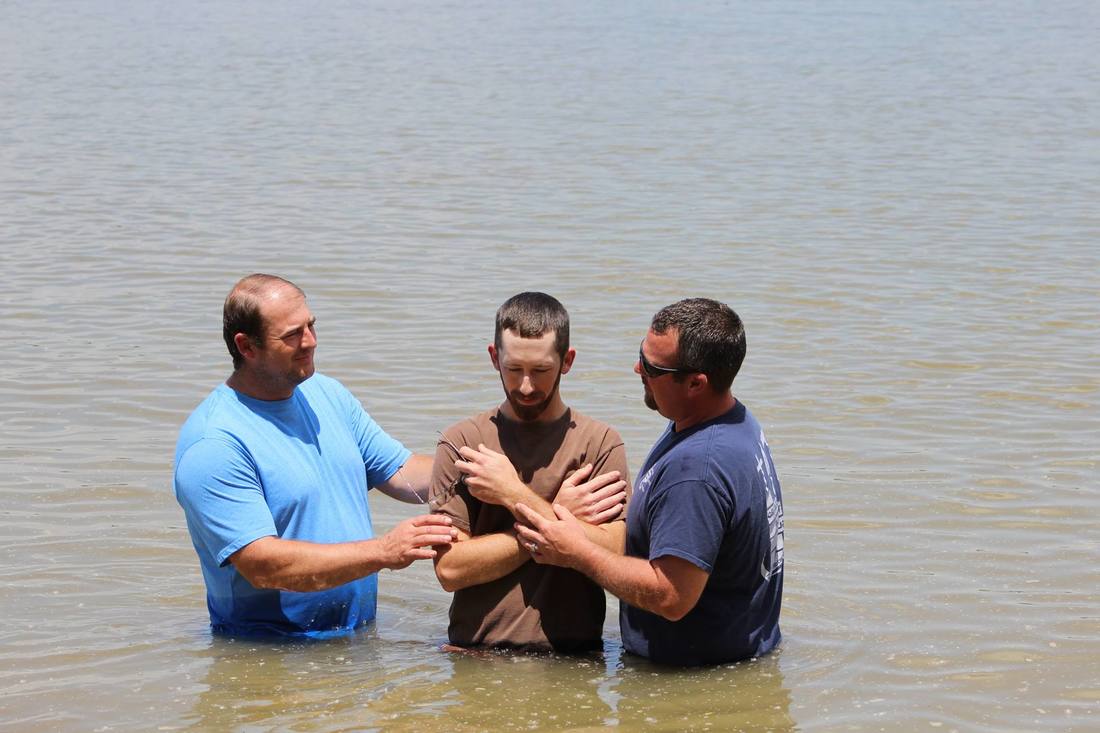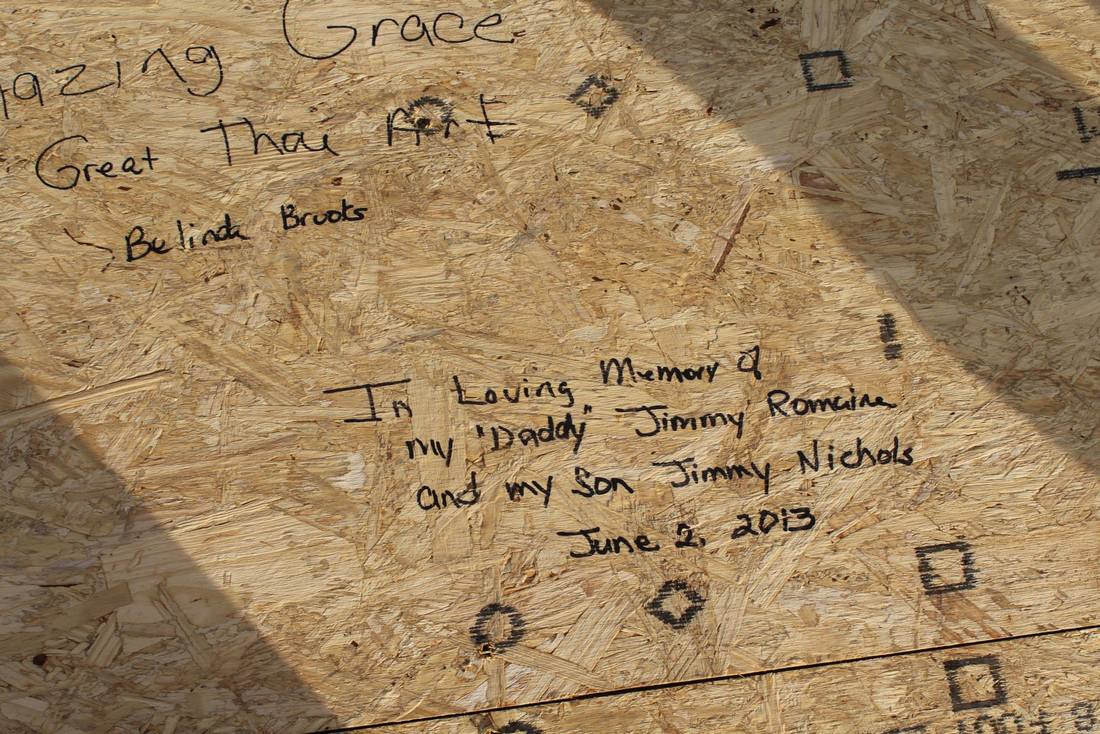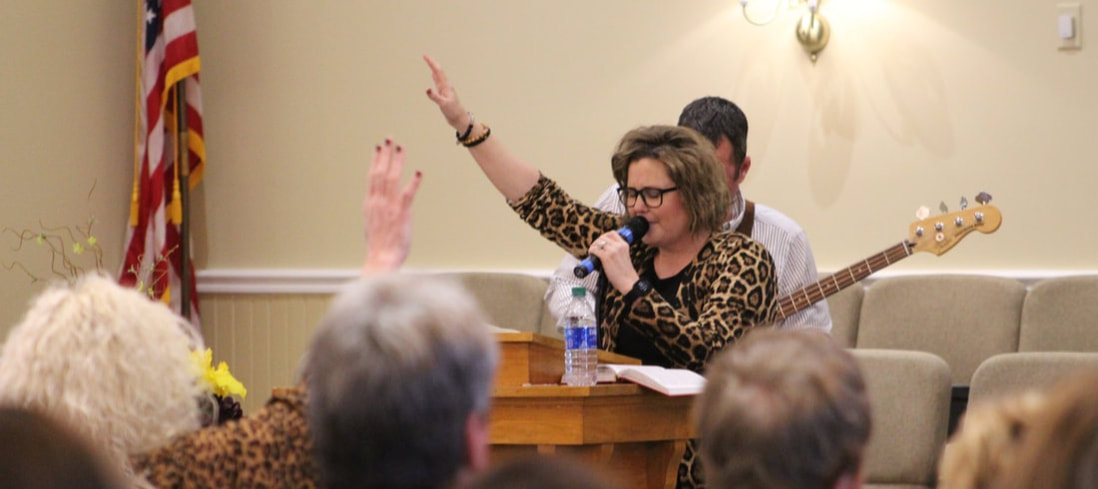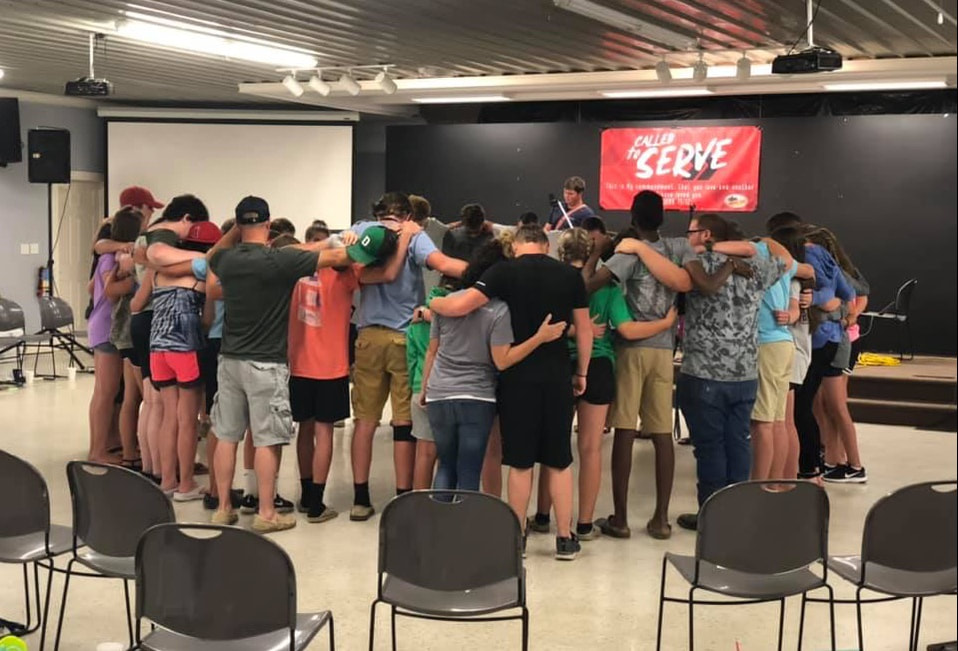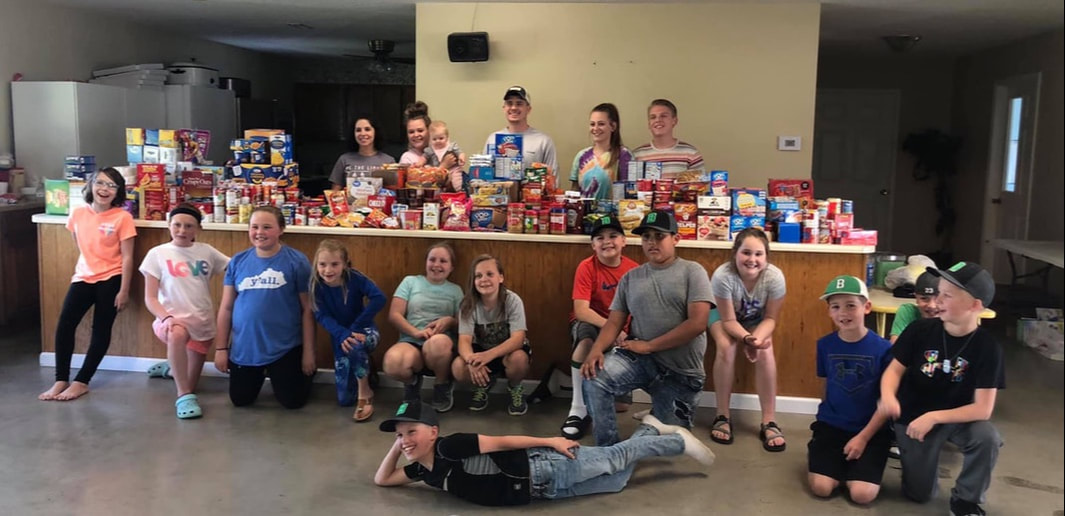OBC History
|
The highlights included came from the 100th Anniversary booklet, current events and memories from some of our members.
In 1900 (one source said that plans began in 1898) several members of the Oscar community felt a need for a local Baptist congregation. The nearest Baptist churches were probably Bandana, Barlow or Mt. Pleasant. With dirt and gravel roads, travel was not always easy by horse-drawn vehicles. And this is how the congregation of Oscar Baptist Church was organized. Among the charter members were James Jones, Mr. and Mrs. Bob Mitchell, Mr. and Mrs. Charles Giles, Udona Hogue, John Stevens, Mrs. R. N. Jarrell, Isaac Lowery, Mr. and Mrs. Wallace Morton, Fred Penn, Mr. and Mrs. T. P. Kinsey, Mrs. R. L. Swope, Mr. and Mrs. George Barnhill, Mr. and Mrs. George Brockman, Jarrett Woodside, John Bailey, M Betty Settle, A. B. Thomas, Albert Ross, Ed Hendricks, Rook Sanders, Lee Yancey, Tenne Yancey, Ira Yancey, Mr. and Mrs. R. L. Yancey, Mr. and Mrs. John Mansfield, and Mr. and Mrs. Shelly Averitt. These members came primarily from other Baptist churches in the area. The church became a member of the McCracken and Ballard Baptist Association in 1902. The first pastor’s name was Crouch and he was a part-time preacher. |
The first meetings were held in an old schoolhouse near the site of the present church building. In 1902 land was purchased on the northwest side of this site and the first church building was constructed. That building remained in use for 44 years, until 1946 when the new building was constructed (current youth building). The cemetery was opened at approximately the same time as the church. The cemetery land was cleared by J. W. Barnhill, who used hand tools to cut trees; and a team of horses to pull stumps. As payment for his services, he received his choice of one cemetery lot. The oldest grave marker found in the cemetery is that of Lee Gran (Green), 1894-1905. The next was one of the original members, R. L. Yancey who died in 1906. The cemetery is still in use today as a community cemetery.
The original building was frame and was said to have seated 500 people. There were wooden benches made from slats, coal stoves, and it was lit by kerosene lamps hung on the wall from nails. In 1929, the church voted to change the lamps to electric lighting. This was done by the purchase of a generator; the sexton started this engine before each scheduled church meeting. One member said the sexton in question was able to add just enough gasoline to the engine to run it until ten minutes after the time that the preaching should be over. The generator then quit and the lights went out. The lights were bare bulbs dropped from the ceiling on long cords.
The original building was frame and was said to have seated 500 people. There were wooden benches made from slats, coal stoves, and it was lit by kerosene lamps hung on the wall from nails. In 1929, the church voted to change the lamps to electric lighting. This was done by the purchase of a generator; the sexton started this engine before each scheduled church meeting. One member said the sexton in question was able to add just enough gasoline to the engine to run it until ten minutes after the time that the preaching should be over. The generator then quit and the lights went out. The lights were bare bulbs dropped from the ceiling on long cords.
When the church was built, the church bell was installed in a small belfry that sat slightly in front and to one side of the church. The bell was run by a sexton one hour before church began. The bell was also community emergency. In July of 1953, the bell was moved to the back of the church building. In 2002 the bell was restored to a prominent place on the church grounds where it still sits today.
During the early years of the church, the pastors were all part-time, and at times, if the minutes are being interpreted correctly, there could have been more than one pastor at a time. The records for the years 1902 to 1912 have been misplaced and we only know the name Bro. Crouch, who was the first pastor. Then we have the following names and years (we believe are correct):
During the early years of the church, the pastors were all part-time, and at times, if the minutes are being interpreted correctly, there could have been more than one pastor at a time. The records for the years 1902 to 1912 have been misplaced and we only know the name Bro. Crouch, who was the first pastor. Then we have the following names and years (we believe are correct):
Pastors of OBC:
|
1912-1920 Jim Burgess, preached once or twice a month, at a salary of $ 200 a year. In 1918, the pastor’s salary was increased to $500 a year and the preaching frequency was changed to twice a month. In December of 1919 Bro. Burgess is recorded as having offered his resignation. The church refused his resignation and called him for another year.
1920: Henry Hogue was elected for the 4th time and his salary was $300 a year. 1922: J.R. Taylor 1925: The church voted to return to preaching once a month. 1926: Green 1930-1933 Hopewell. At one time the minutes stated that Bro. Hopewell wanted to resign but the church was unable to pay him his back salary and his resignation was not accepted. 1933: Henry Hogue Charles Warford 1942: D. K. Long 1944: S. J. Douglas 1947-1948 Reeves. This was the first full-time pastor of this church. An amusing anecdote on this note is that the church decided that a parsonage should be supplied for him and his family. Bro. Reeves was a city person and had not lived in an area without electricity, so he was having trouble adjusting. It is said that he was willing to try and adjust to the lack of a bathroom, but one night an owl hooted “whooo” at him as he went out and that was too much. Bro. Reeves did not stay long at Oscar, 1948: Robert Clark |
1953: Carl Woolridge
1956: Marshall Bowland 1958-1962 Willis McCracken 1962: Fred Richardson 1963-1966 James Emerson 1967: John Wooley 1971: Paul Bone 1973: Bernard Watson 1978: Carl Standridge 1982: Jimmy Winsett. An interim pastor, Larry Bowles, was hired for six months while Bro. Winsett was on active duty. 1986: Eugene Powell 1989: Paul Crews 1991: Marty Brown. An associate pastor, Cary Steele, was hired in 2000 to fill the pulpit during the illness of Bro. Brown. 2007-Present: Ryan Baker |
At the April 1944 business meeting, repair of the existing church versus building a new church was debated. The motion was for the made to begin a building fund for a new facility to be started when possible. Meanwhile, new windows and other repairs were done on the existing church. Plans for the new building were adopted in December 1944, and the building committee met to set a date for the beginning of construction. The site chosen was in the center of the church grounds. Ground was broken for the basement on March 18, 1945. A. O. (Lonnie) Gordon was foreman for the construction of the basement. Horace Reesor and A. O. Gordon were appointed as a committee to employ a carpenter to finish the church. Services were held in the uncompleted new church building after December 1945. The building was dedicated in May, 1946, still not completely done. The dedication service was preached by S. J. Douglas, pastor. The benches from the old church building were used in the church until 1949. Hardwood floors were laid in 1948.
The new church was built of cinder blocks purchased from the maker in LaCenter. Because of the restrictions of WWII, cement blocks were not then available for buildings. Under the leadership of pastor S. J. Douglas, members donated time, money and labor to construct the new building. There was a raised main floor with vestibule and sanctuary and a full basement for Sunday school rooms. There were about 120 members at that time. The new church was “free of debt” at the time of completion. Construction materials were obtained from various sources. Not only were materials taken from the original building but also from the munitions depot. These were given to the church at no charge other than transportation of the materials.
By December 1946, it was decided that there should be a parsonage, for a full-time pastor had been hired, and he needed a place for his family. A house and small farm on Smoky Road were purchased (the Abernathy place). This did not work out to a satisfactory manner. The decision was made to sell that house and purchase a lot near Oscar for the new parsonage. Time, labor, and money were donated and the parsonage was completed in 1948. It was paid in full upon completion. In addition, there was money left in the building fund and this was used to put the hardwood floor in the church. And to buy new benches, choir seats and two matching chairs. Other amenities were added as the years went on. Some of those amenities are the steeple, added in 1990; the baptistery was added in 1995 and the nursery and new fellowship hall with Sunday school rooms was built in 1999. In 1996 playground equipment was added and funded by the sale of the first cookbook.
The new church was built of cinder blocks purchased from the maker in LaCenter. Because of the restrictions of WWII, cement blocks were not then available for buildings. Under the leadership of pastor S. J. Douglas, members donated time, money and labor to construct the new building. There was a raised main floor with vestibule and sanctuary and a full basement for Sunday school rooms. There were about 120 members at that time. The new church was “free of debt” at the time of completion. Construction materials were obtained from various sources. Not only were materials taken from the original building but also from the munitions depot. These were given to the church at no charge other than transportation of the materials.
By December 1946, it was decided that there should be a parsonage, for a full-time pastor had been hired, and he needed a place for his family. A house and small farm on Smoky Road were purchased (the Abernathy place). This did not work out to a satisfactory manner. The decision was made to sell that house and purchase a lot near Oscar for the new parsonage. Time, labor, and money were donated and the parsonage was completed in 1948. It was paid in full upon completion. In addition, there was money left in the building fund and this was used to put the hardwood floor in the church. And to buy new benches, choir seats and two matching chairs. Other amenities were added as the years went on. Some of those amenities are the steeple, added in 1990; the baptistery was added in 1995 and the nursery and new fellowship hall with Sunday school rooms was built in 1999. In 1996 playground equipment was added and funded by the sale of the first cookbook.
The church congregation has never been a wealthy one but they have given generously what they possessed. The church is a member of the Baptist Association and has given to missions at home and abroad. During WWI there is a record of appropriations being made for the purpose of sending New Testaments for the “boys in service”. This was also done in WWII and the Korean War. Money is still donated for the Gideon ministry and several church members are active in the Gideon’s.
In the early years of the church there was a library. In 1917 Novie Yancey was appointed the librarian for the following year. Other interesting news from the old records is that in 1938 Oscar Baptist Church had a radio program. In February of 1938 a motion was made that “we” broadcast twice a month for the next three months instead of once a month and thanks were extended to the girls for singing for us over the radio.
During the years of depression the church served as a focal point of the community for many people. In 1928 a decision was made to have a yearly homecoming on the third Sunday in May. Up until now homecoming was not always on the same date and they were not meetings of fellowship but rather to update the membership rolls. No one was left on the roll that did not attend or at least give a good reason to remain on the roll. But as the recurring date was set, homecoming became a time of food, fellowship, special services and singings on the church grounds. This custom is still followed today.
In May of 1932, the member ship count was 107 and now in May of 2017, our current membership count is in the upper 260’s. As the congregation grew they out grew the old church that currently serves as the youth building. The new church construction was started in 2013. During construction of the new facility the members of the church were encouraged to come in and write bible verses, prayers and blessing on the floor boards. The first services were held in the new sanctuary in January of 2014.
Changes and growth continue for Oscar Baptist Church. We have recently been incorporated, as of 2017 and we now have our own website at www.oscarbaptistchurch.com. Oscar Baptist has many activities that take place during the year, such as, youth rallies, youth camps, bowling trips, skating trips, women’s retreats, bible school, monthly men’s breakfast and much more. The church is still very much involved in community outreach such as the jail ministry and Lifeline Ministry. The most recent community activity that the church has been involved in is a community church service at Ballard Memorial High School that brought in former U.K. basketball players to give their testimonies and help with a basketball camp for elementary age children and a meet and greet/autograph session.
In the early years of the church there was a library. In 1917 Novie Yancey was appointed the librarian for the following year. Other interesting news from the old records is that in 1938 Oscar Baptist Church had a radio program. In February of 1938 a motion was made that “we” broadcast twice a month for the next three months instead of once a month and thanks were extended to the girls for singing for us over the radio.
During the years of depression the church served as a focal point of the community for many people. In 1928 a decision was made to have a yearly homecoming on the third Sunday in May. Up until now homecoming was not always on the same date and they were not meetings of fellowship but rather to update the membership rolls. No one was left on the roll that did not attend or at least give a good reason to remain on the roll. But as the recurring date was set, homecoming became a time of food, fellowship, special services and singings on the church grounds. This custom is still followed today.
In May of 1932, the member ship count was 107 and now in May of 2017, our current membership count is in the upper 260’s. As the congregation grew they out grew the old church that currently serves as the youth building. The new church construction was started in 2013. During construction of the new facility the members of the church were encouraged to come in and write bible verses, prayers and blessing on the floor boards. The first services were held in the new sanctuary in January of 2014.
Changes and growth continue for Oscar Baptist Church. We have recently been incorporated, as of 2017 and we now have our own website at www.oscarbaptistchurch.com. Oscar Baptist has many activities that take place during the year, such as, youth rallies, youth camps, bowling trips, skating trips, women’s retreats, bible school, monthly men’s breakfast and much more. The church is still very much involved in community outreach such as the jail ministry and Lifeline Ministry. The most recent community activity that the church has been involved in is a community church service at Ballard Memorial High School that brought in former U.K. basketball players to give their testimonies and help with a basketball camp for elementary age children and a meet and greet/autograph session.
